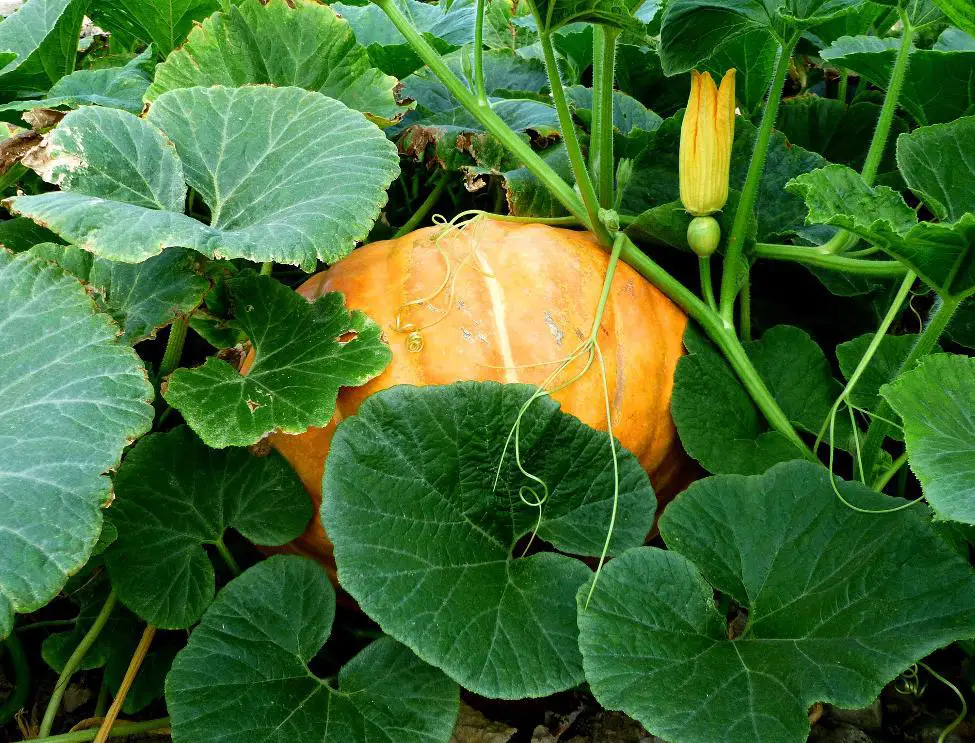Pumpkins belong to the cucurbits family, which also includes squashes, cucumbers, zucchinis and melons. They are highly productive growers that can feed the whole family. They grow from vines stretching out along the ground or can be trained up the side of trellis or canes.
The flesh and skin are high in fibre, antioxidants, vitamins and minerals, but low in carbohydrates and with zero fats, making them great for digestive health.
Whether you eat the flesh and pepitas (seeds) of pumpkins, flowers and fruit of zucchinis, or grow gourds for attractive ornaments and containers, these vegetables deserve a place in every productive garden.
Steps to regrow pumpkin
- Find a good location for your plant
- Prepare your pumpkin
- Plant your pumpkin
- Harvest and use your pumpkin
Find a good spot for your pumpkin
Pumpkins require a frost-free growing period of three to four months. Pumpkins love warmth.
The plants can take up a lot of room, as the stems will try to stretch out to find space for the flowers and fruits to open out. They also take lots of nutrients from the soil, so grow particularly well if planted directly into compost heaps.
Prepare your pumpkin plant
Plants in the squash family, including cucumbers, pumpkins, winter squash, and gourds, freely cross-pollinate with each other. What you get when you plant seeds from your pumpkin depends on how the plant was grown. If it was in a field with lots of the same type, you’d probably get a pumpkin that looks the same. If it was grown among a mixture of squash plants, you could end up with something pretty interesting.
Next time to cook with pumpkin, save some seeds to sprout. You will need to leave 6-7 cm between seeds when planting them.
You can clean and roast the rest of the seeds and eat them, they are delicious!
Plant your pumpkin
Give the plant excellent drainage by mounding planting areas and mulching thickly, not only to conserve moisture but to minimize soil-borne diseases and to keep fruit clean.
Supplement the soil with liquid fertilizer or generous quantities of well-rotted manure in early spring and again in summer to keep plants growing strongly. Avoid applying high-nitrogen fertilizers to pumpkins late in the season, as this shortens storage life.
Most pumpkins climb if given initial training, which is handy to save space in small gardens. North-facing fences, garden sheds (pumpkins can develop on the roof), clothes lines, and pergolas are suitable as long as they can bear the weight of a mature fruiting vine.
Harvest and use your pumpkin
The fruits are ready to harvest when the stems start to dry out. Cut the fruits off the plant as required. After cutting, the fruits will need to cure off the plant for around 10 days, preferably in full sun outside. If the weather is poor, bring them indoors in a warm, dry place, preferably a greenhouse if you have one.
If you plan to store pumpkins over the winter, leave them on the plant as long as possible to give them the best chance to fully ripen and develop tough skin.
If plants have developed tough skin, they should keep for up to six months. Store in a dry place. They need plenty of air circulation, so don’t stack them too high.
With your regrown pumpkin, you can now prepare lots of different dishes to enjoy with your loved ones. Nothing beats the flavour of home-grown food.
